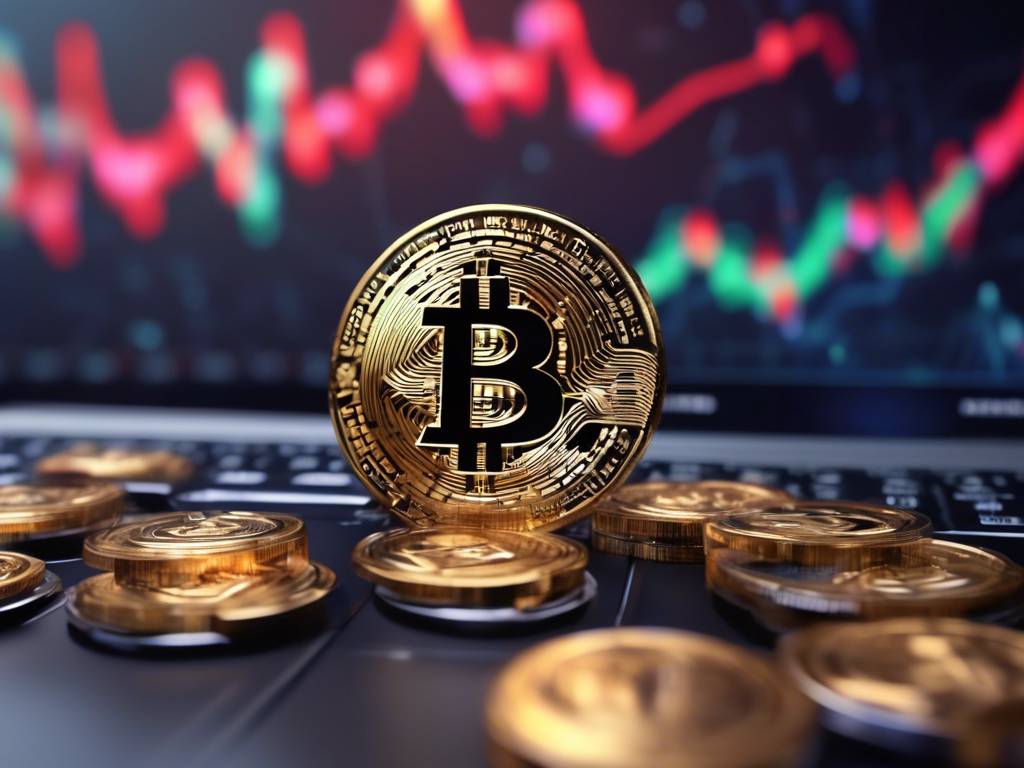Will Stablecoins Rule the Future of Digital Currency?
Let’s dive into the fascinating world of stablecoins and their potential impact on the cryptocurrency market. There’s a lot happening in this space, and it’s crucial for anyone thinking about investing in crypto to understand the nuances and sentiments being discussed by industry leaders. So, grab a coffee, and let’s chat about why the next year could be monumental for stablecoins, particularly as we’re seeing interesting shifts in regulation and public preference.
Key Takeaways:
- Circle’s CEO Jeremy Allaire is optimistic about global regulations improving for stablecoins.
- Stablecoin market is currently valued around $170 billion but has room to grow.
- People seem to prefer privately-issued stablecoins over government-backed digital currencies.
- Regulatory insights and trends suggest a trend towards increased acceptance and usage of stablecoins.
The Optimism Around Regulations: A Shift in Perspective
Recently, Jeremy Allaire, CEO of Circle—often known for its USDC stablecoin—spoke at the Binance Blockchain Week in Dubai. He highlighted something fresh and hopeful: the regulatory environment for cryptocurrencies is showing signs of improvement across the globe. Contrary to many naysayers who might believe that governments are clamping down hard on crypto, Allaire feels that those once against the sector are now watching closely. It’s like waiting for the rain to stop before stepping out—everyone’s curious, but waiting to see if it’s safe.
You know what’s interesting? Allaire mentioned that the future of stablecoins could be pivotal in the next 12 months. They’ve seen tremendous growth and now sit at roughly $170 billion, mostly dominated by leading players like Tether’s USDT and Circle’s USDC. When I hear numbers like that, it gets me thinking about the potential for investment opportunities. Just because something is "stable" doesn’t mean it’s stagnant!
Public Preference: Stablecoins vs. CBDCs
So, let’s talk about central bank digital currencies (CBDCs). Allaire firmly believes that the majority of the global population will lean towards privately-issued stablecoins rather than government-backed options. This perspective may be a bit spicy for some traditionalists, but when you look into it, there’s truth to be unearthed.
Take China as an example. They rolled out their own CBDC a few years back, yet the everyday Chinese folks don’t seem to be clamoring to use it. In fact, Allaire noted that the government had to sweeten the deal with free coupons to get people to use it actively. If that doesn’t tell you something about consumer preference, I don’t know what will! It’s about innovation, accessibility, and—let’s be real—a little bit of fun. When people have a choice, they’re often going to pick something that feels less controlled and more spontaneous.
Room for Growth
Now, let’s pause and reflect on the stablecoin market’s current size, which is a mere fraction of the entirety of global finance, much like a pinhead on a football field. According to Allaire, there’s still an enormous potential for growth here. This excites me; it opens up a treasure chest of opportunities for investors looking to hop on the stablecoin bandwagon.
If you’re considering stepping into the crypto market, think about diversifying your investments into stablecoins. They could provide some balance in a generally volatile market, especially when you consider their underlying value pegged to traditional assets—usually fiat currencies like the US dollar. Thus, they can offer the advantages of cryptocurrencies— like swift transactions and minimal fees—along with the steadiness of traditional currencies.
Practical Tips for Interested Investors
-
Research: Don’t just follow the hype. Look into specific stablecoins like USDC and USDT to understand how they manage their reserves and what makes them unique.
-
Track Regulation News: Keep an eye on global policy changes regarding cryptocurrencies. Regulations often influence market movements dramatically.
-
Diversify Your Portfolio: Consider including a mix of crypto assets. Balancing between volatile currencies and more stable options can reduce risk.
-
Engage with the Community: Join forums, attend meetups (virtually or in person), and don’t hesitate to ask questions! Engaging with others can offer new perspectives.
- Stay Updated: The crypto world evolves rapidly. Dedicate a few minutes each week to catch up on the latest trends and news surrounding stablecoins and their adoption.
Final Thoughts
As we conclude our chat, think about this: Is stablecoin the bridge between traditional finance and the revolutionary aspects of cryptocurrency? It seems like it might be. I can’t help but feel excited to watch this space unfold. The next 12 months could provide insights and data that redefine our financial landscape, and aren’t those the moments we live for as investors?
What’s your take on the future of stablecoins? Are you ready to embrace them, or do you prefer to sit on the sidelines?




 By
By
 By
By

 By
By
 By
By